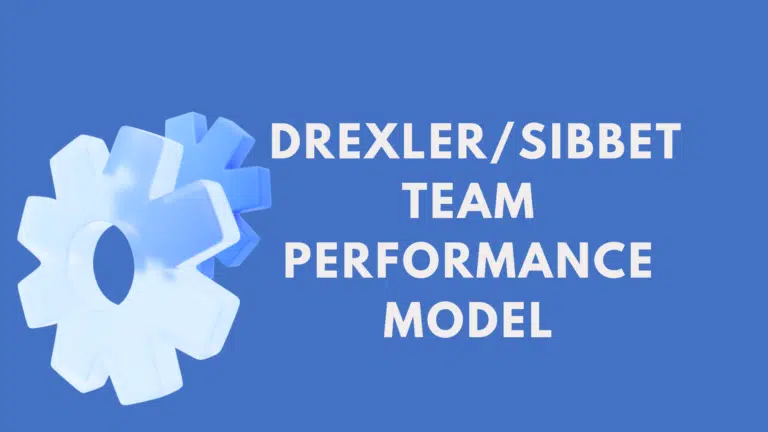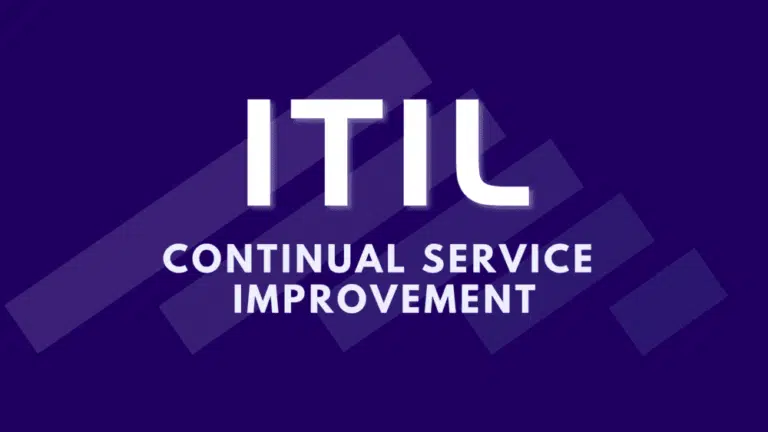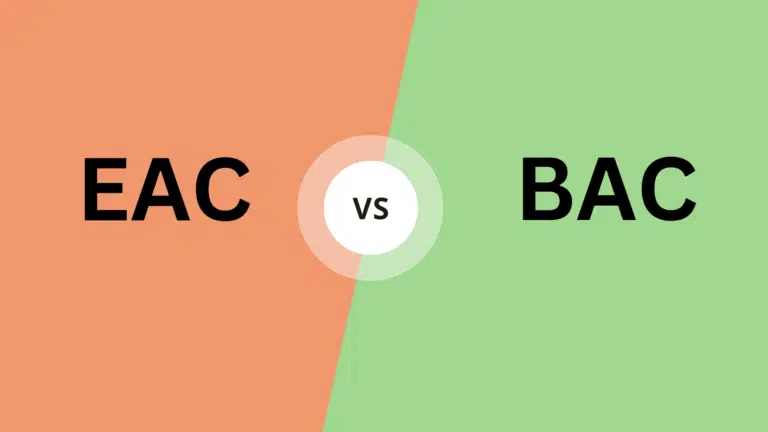Today we will discuss what-if scenario analysis (WISA) in project management.
Projects are inherently risky by nature and come with uncertainties. Frequent unexpected changes make projects vulnerable.
You can use what-if analysis to find a solution in such a scenario.
What-if Scenario Analysis (WISA)
WISA is also known as “what if analysis” or “deterministic simulation,” is a project management technique to predict an outcome using different variables.
According to the PMBOK Guide, “What-if scenario analysis is the process of evaluating scenarios in order to predict their effect, positive or negative, on project objectives. This is an analysis of the question, “What if the situation represented by scenario X happens?”
Organizations that are proactive about uncertainty create consistency and stability. A what-if scenario analysis helps do this.
A scenario is a possible event or several events that can affect your project objectives.
A what-if scenario analysis can involve a basic analysis of the effect of changing the duration of one or more tasks. This can include generating projections based on past performance, integrating duration uncertainty, conducting a budget, and schedule risk assessment.
When is What-If Scenario Analysis Useful?
The optimal moment to carry out a what-if analysis is when you are in a decision-making process and when you reach key milestones.
This lets you create a range of possibilities and predicts expectations.
Carrying out a what-if analysis at different stages of the project helps you find different situations that you had not thought about during the planning stage. Therefore, you should evaluate your plan regularly and alter your what-if scenarios as appropriate.
Benefits of What-If Scenario Analysis
#1. Project Predictability is Improved
A what-if analysis involves speculative reasoning about how a problem could be addressed in the future. The more questions you ask, the greater your ability to anticipate problems. This means that the outcome of the project will be predictable.
#2. Well-informed Decisions and Actions
Project managers can make better-informed decisions with what-if analyses. It makes us aware of any anticipated problem; so we can adapt efficiently and make well-informed decisions.
#3. Factor Analysis is Made Possible
The what-if scenario analysis assesses the impact of changing the elements of your objectives. You can use it to analyze an infinite number of possibilities. A simplified approach to what-if analysis may also be utilized to gather the essential information more quickly.
#4. Assessment of Potential Outcomes
What-if scenario analysis can be used to understand how changes in an element impact the project’s outcome. This gives a better understanding of potential risks, challenges, and their influence.
#5. Simplifies Project Management
Project management is not easy.
This method offers you solutions for every possible development. What-if scenarios help you picture all possible complications, letting you choose an approach with several paths to your intended outcome, irrespective of the twists and turns.
#6. Financial Planning Advantages
Using what-if scenario analysis in budgeting helps you to calculate cost requirements for best-case and worst-case situations. This improves how you plan and allocate resources.
It also reduces the chances of your project going over budget.
#7. Demand Planning
What-if analysis helps in long-term and short-term demand planning for project operations.
Scenario planning lets you prepare for unexpected events and uncovers solutions for any disruptions. It assists you in identifying cost-efficient and effective ways to carry out operations and projects.
#8. Inventory Planning
Planners can decide whether to expand inventories based on the outcome of the what-if analysis. What-if scenarios give a project management team a visual picture of the requirements for smooth operation. Project managers can ensure that their inventory is neither piling up nor lacking.
What-If Scenario Analysis Using Monte-Carlo Analysis
The Monte-Carlo analysis is a form of WISA. It simulates countless combinations of different scenarios using three-point estimations and computer software.
Since Monte Carlo requires many simulations, you cannot do it manually.
You must enter different parameters and variables in the software. The Monte Carlo simulates possible scenarios and gives you the likelihood of achieving the objectives.
The simulation indicates the following key objectives:
#1. The Likelihood of Completing Project On Time
The Monte Carlo analysis can provide the following results: The probability of finishing the project on June 1st is 80%, the probability of finishing the project on July 1st is 90%, and the probability of finishing the project on August 1st is 95%.
The further away from the deadline, the higher the likelihood of the project being completed on time.
#2. The Likelihood of Completing the Project On Budget
The scenario analysis may show that you have a 75% chance of finishing the project with one million USD, an 85% chance of finishing the project with 2.5 million USD, and so on.
Example of What-If Scenario Analysis
A WISA aims to see what occurs if specific actions are performed, allowing you to examine which outcomes favor your project goal.
For example, if a firm is experiencing staff turnover, it may require a new hiring strategy. They may come up with several scenarios and assess the pros and cons of each:
- Providing each employee with a personalized bonus depending on their performance. The benefit is that it will increase staff productivity. A drawback is that it may cause employees to become competitive.
- As often as possible, collaborate with freelancers. The benefit of doing this is that freelancers will be paid only when required. A drawback is that they will be less devoted to the firm.
- Offer all temporary staff permanent contracts. The benefit is that these team members already aware of their expectations, which improves loyalty. The downside is that it is costly, and firing a permanent employee who does not perform well becomes more challenging.
The organization can make decisions based on the scenarios outlined above. The main objective is not to be limited to just one solution but to consider all options.
What-If Scenario Analysis in Excel
Often what-if analysis requires mathematical calculation, and Microsoft Excel is a good tool to use.
Excel utilizes the Forecast command group found on the Data tab to assist you in constructing simple predictions or project models. You may use the What-If Analysis button to predict the project budget.
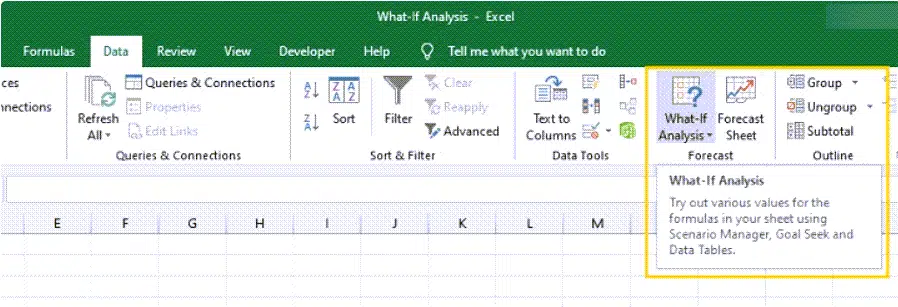
This command alters cell values to examine how such adjustments impact the formulae results on the worksheet.
Scenarios, Data Tables, and Goal Seek are three types of What-If Analysis tools in Microsoft Excel. Data tables and scenarios use a collection of input parameters and predict what could happen.
#1. Scenario in Excel
A scenario is a series of data that Excel maintains and may automatically swap. You can generate and store multiple data sets on an Excel worksheet, then flip to each to see alternative outcomes.
You can gather workbooks and integrate scenarios. After collecting all scenarios, you can compile a Scenario Summary Report.
#2. Goal Seeking
Goal Seek is Excel’s basic sensitivity analysis tool.
Let’s assume you know your desired result; Excel’s Goal Seek function enables you to get there by mathematically changing a single variable in the equation.

Just one variable input value is used in Goal Seek.
You can use the Solver add-in if you need to estimate several input values, such as the amount borrowed and the installment payment amount for a loan.
#3. Data Tables
You may use a data table to examine the results of a formula that utilizes one or more variables or several formulae that use a shared variable.
Data tables make it simple to analyze many options at a glance. The results are straightforward and in tabular form, since you only focus on one or two factors. The data table can have only two variables, and you can use scenarios if you want more than two variables.
#4. What-if Scenario Manager
Scenario Manager is another tool for what-if analysis in Excel.
This tool is an advanced version of Goal Seek because it lets you change several variables simultaneously.
Here are steps to generate an analysis report:
- Define the set of values and specify the input cells you wish to alter (the changing cells).
- Add each scenario, name it, and fill in the values for each scenario’s changing input cells.
- Choose the output cells you wish to monitor (result cells). In the original set of values, these cells contain formulae. The formulae make use of the variable input cells.
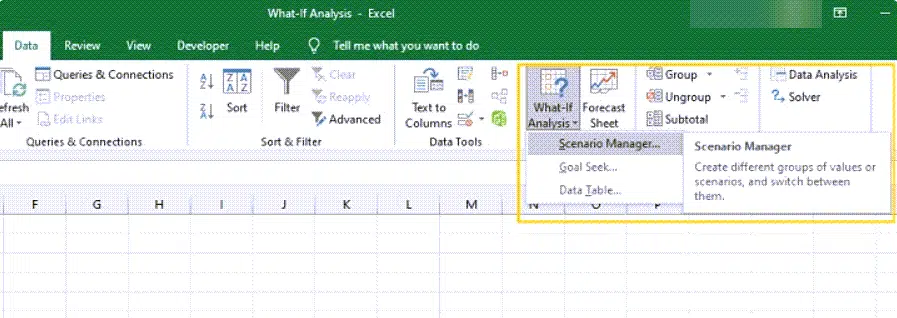
Conclusion
You can use WISA in strategic project planning to understand the complexity of a problem and prioritize tasks. What-if scenario analysis is not a complicated and time-consuming technique.
Several systems and software platforms make it possible. You can build a what-if scenario analysis using Microsoft Excel’s functionalities and the Monte-Carlo analysis approach.
Since this technique is given in the PMBOK Guide, you may see questions about it on your PMP exam.
Here is where this post on what-if scenario analysis comes to an end. Please share your experience using this technique in the comments section.

I am Mohammad Fahad Usmani, B.E. PMP, PMI-RMP. I have been blogging on project management topics since 2011. To date, thousands of professionals have passed the PMP exam using my resources.


